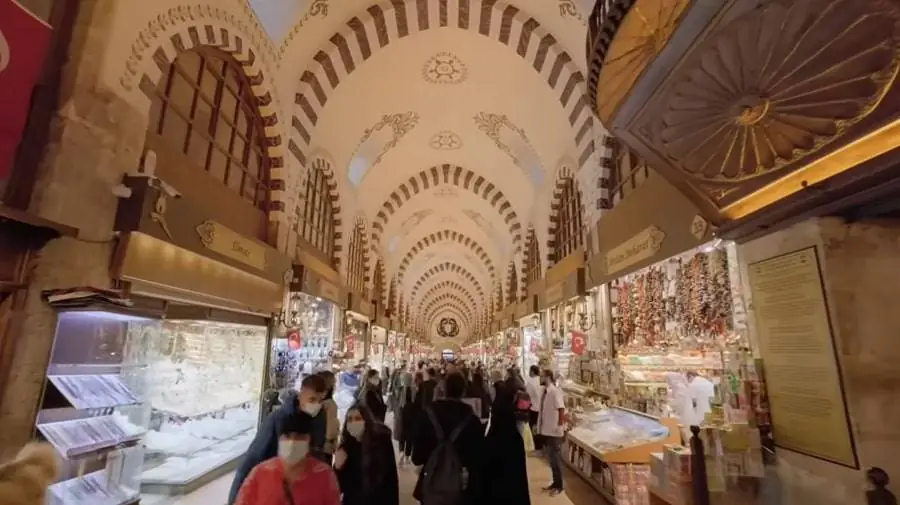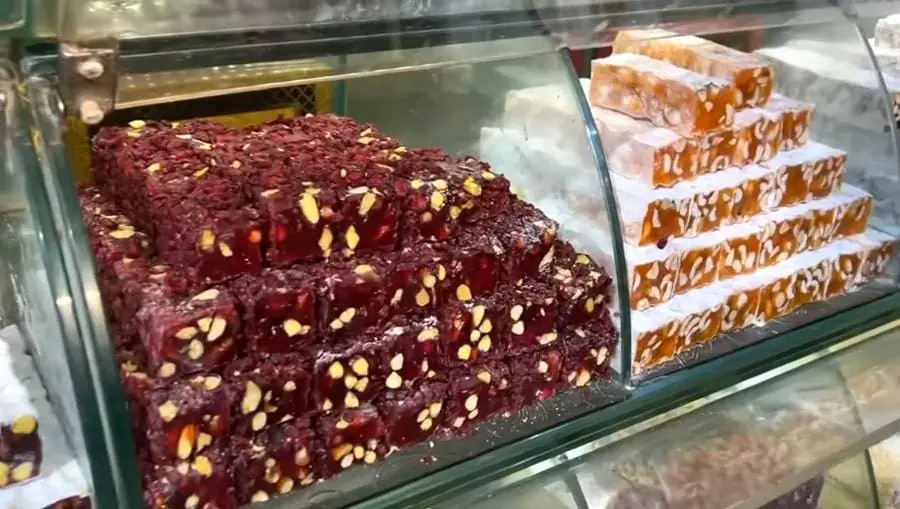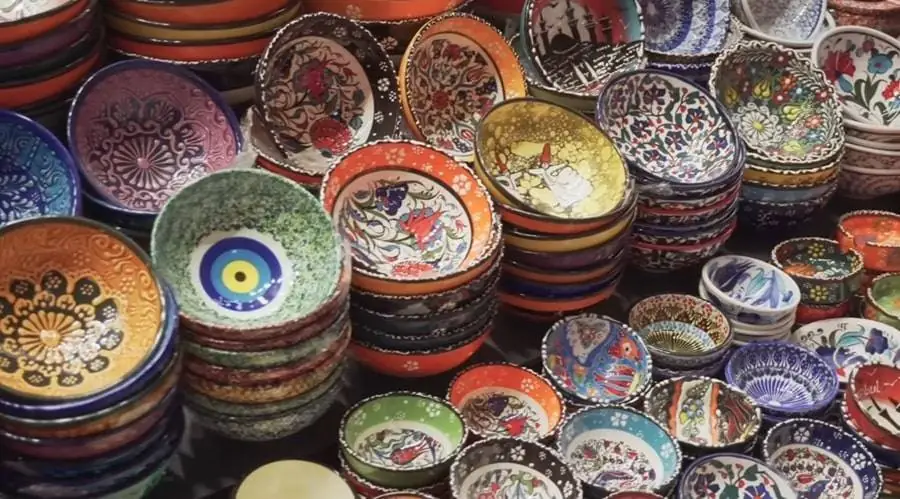Immerse yourself in a vibrant tapestry of sights, smells, and flavors at the Spice Bazaar (Mısır Çarşısı) in Istanbul. Nestled amidst the bustling Eminönü district, this historic covered marketplace is a sensory overload in the best way possible. Beyond the dazzling pyramids of spices lie endless rows overflowing with Turkish delights, mountains of colorful nuts, and fragrant herbs fit for a sultan’s kitchen. This article will be your guide to navigating this captivating bazaar, where every corner promises a culinary adventure.
History and Heritage of Spice Bazaar
The Spice Bazaar’s story is as rich and aromatic as the spices it sells. Built by the Ottomans in the 1660s as part of the Yeni Mosque (New Mosque) complex, it served as a crucial link in the global spice trade. Imagine merchants from far-flung lands like India, Arabia, and even Africa bartering their precious cargo – cinnamon sticks from Ceylon, plump saffron threads from Persia, and vibrant paprika from Hungary.
Today, the bazaar continues to be a vital center for the spice trade, offering a dazzling array of not only local Turkish spices but also international flavors from around the world. As you enter the bazaar, take a moment to admire the architectural grandeur. The towering main entrance with its pointed archway and the domed central hall are testaments to Ottoman design and craftsmanship.
Exploring the Spice Bazaar

Prepare to be swept away by a symphony of sights and smells as you step through the arched gateway. The air is thick with the heady aroma of freshly ground Turkish coffee, mingling with the warm notes of cinnamon and the citrusy tang of lemon zest. Stalls overflowing with colorful spices line the narrow walkways, creating a mesmerizing kaleidoscope. Sunbeams stream through strategically placed openings in the lofty ceiling, illuminating mounds of ruby red Aleppo pepper flakes, vibrant green pistachios, and jewel-toned piles of turmeric. But spices are just the beginning.
Discover an enticing array of dried fruits like plump apricots and glistening black raisins, alongside mountains of crunchy nuts like pistachios and hazelnuts displayed in artistic arrangements. Don’t forget to indulge in the quintessential Turkish delight, a sweet treat of rosewater-flavored jelly dusted with powdered sugar, offered in a rainbow of colors and flavors.
Must-Visit Spice Shops and Stalls
The Spice Bazaar is a haven for seasoned gourmands and curious explorers alike. Seek out renowned shops like Kurukahveci Mehmet Efendi, a family-run business established in 1871, famous for its freshly roasted and ground Turkish coffee. For a truly unique experience, head to Yeni Baharatçısı (New Spice Merchant), known for its exotic spice blends like the fragrant “Yemen Spice Mix” and hard-to-find ingredients like sumac, a tangy Middle Eastern spice, and mahlep, a sweet-aromatic spice derived from cherry pits.
Insider Tips
Embrace the Bargaining: Bargaining is a delightful cultural practice in the bazaar. Start with an offer around half the asking price and be prepared to negotiate good-naturedly. Remember, a smile and a friendly conversation can go a long way. Many shopkeepers are happy to offer you a taste or a sniff of their spices to help you decide.
Go Beyond the Obvious: While Turkish staples like paprika and cumin are readily available, don’t be afraid to ask about lesser-known spices like Urfa biber (a smoky Aleppo pepper) or çemen (a paste made from dried chilies and walnuts). These unique spices can add a whole new dimension to your cooking. Elevate your experience of Spice Bazaar Istanbul with our top-rated tour offering.
Culinary Delights and Tastings

The Spice Bazaar is not just a place to shop – it’s a place to tantalize your taste buds. Many shops offer complimentary tastings, allowing you to sample different spices and discover new flavor combinations. Witness live spice demonstrations, where vendors showcase their skills in grinding spices using traditional mortars and pestles, and creating unique blends based on your preferences.
These interactive experiences offer a deeper appreciation for the culinary traditions associated with the bazaar’s offerings. For a truly immersive experience, consider participating in a Turkish cooking class offered by some shops, where you can learn to prepare traditional dishes using the very spices you’ve been exploring.
Cultural Significance and Traditions

Spices are not just flavorings in Turkish cuisine; they are deeply woven into the country’s cultural fabric. From warming winter dishes flavored with cumin and cinnamon to fragrant stews infused with cloves and cardamom, spices play a vital role in Turkish cooking. They were also traditionally used in medicine and religious ceremonies, reflecting their historical significance. The Spice Bazaar itself embodies this rich heritage, serving as a vibrant social hub where people come together to barter, share recipes

